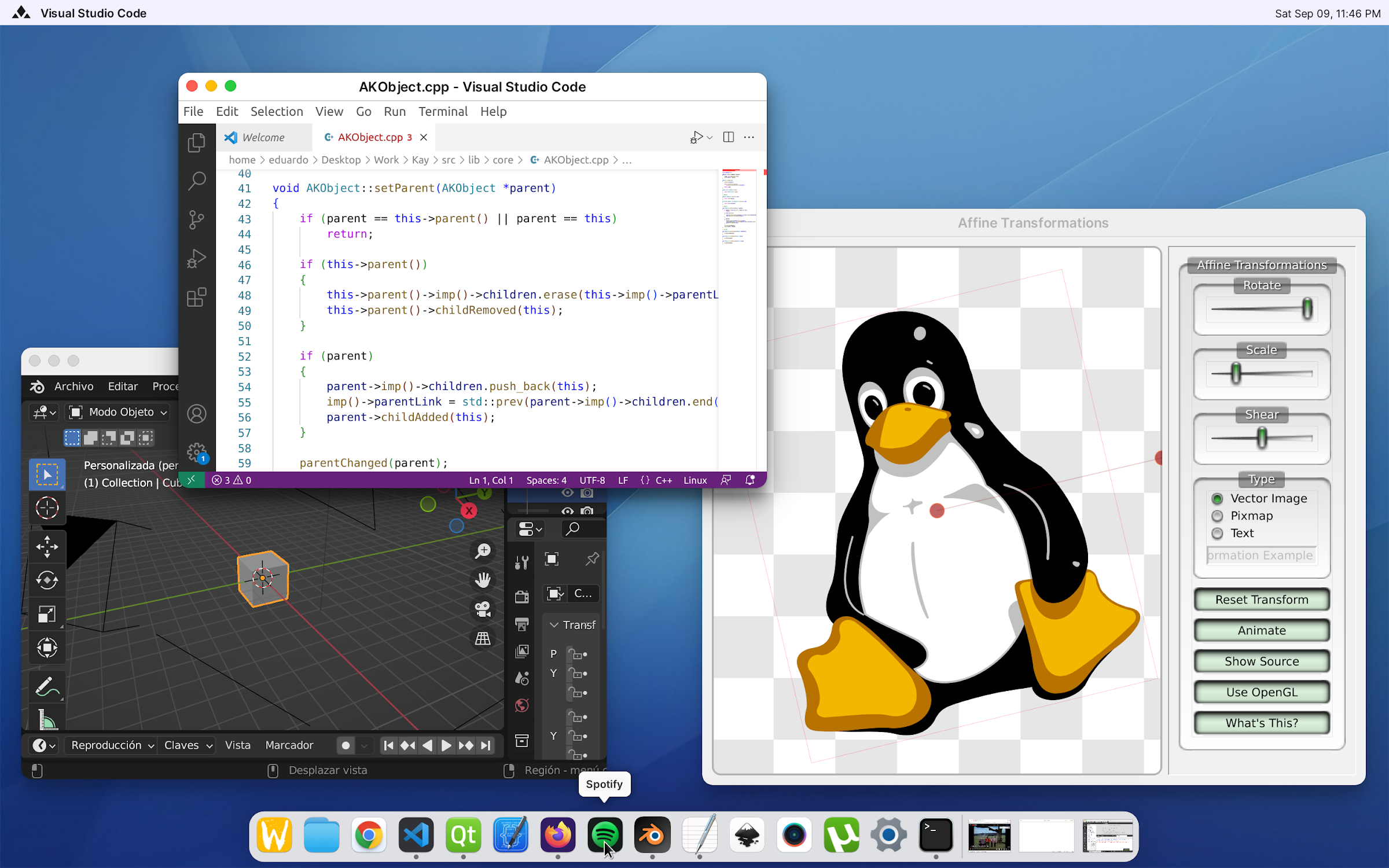This looks awesome.
Looks like it could be a very good alternative to mutter and kwin.
Questions:
- what about Vulkan instead GL? Should be more performant and use less battery. Especially if it is meant to also work on mobile.
- is Louvre drawing those window decorations?
- there is some overlap with https://github.com/winft/theseus-ship - any idea for a collaboration there?
- there seems to be a company behind, while I didn't investigate, are there plans for further development that you would publish, is there a way to influence those plans (suggestions, donations, some other way)
- any plans to make a shell around it?
- it is mentioned that this is a library, but obviously there is a working compositor. Regardless if this is a technology demonstrator, would it be possible to publish a compositor with decent theming and a few distinct layer modes (classic windows with taskbar, windows 8 like, Mac, gnome, ubuntu). I guess many smaller Linux DEs would consider it then...
- how does it compare to kwin/mutter?
